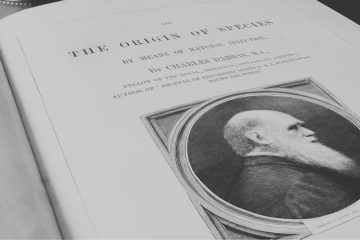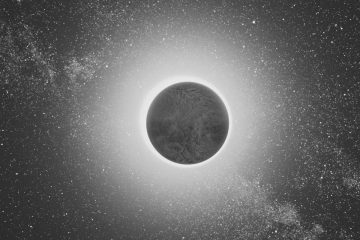What Happened On September 14th?
On September 14, 1959, in the early hours of Moscow’s morning, the Soviet Union successfully crashed the Luna 2 probe onto the surface of the Moon, becoming the first human-made object to reach another celestial body. Soviet engineers and scientists monitored the probe’s final moments as it sped toward the lunar surface at 7,500 miles per hour. At exactly 21:02 GMT, the signal from Luna 2 ceased, confirming its impact. This moment not only proved that space travel beyond Earth’s orbit was possible, but it also established the Soviet Union as the leader in the Space Race.
The timing of Luna 2’s success was no accident. As Soviet Premier Nikita Khrushchev prepared for his historic visit to the United States, Soviet officials planned the mission to coincide with his trip. This gave Khrushchev an undeniable upper hand in his diplomatic engagements with U.S. President Dwight D. Eisenhower. Khrushchev’s delegation wasted no time in announcing the successful impact, amplifying the symbolic importance of the Soviet Union’s technological achievements on the global stage. It wasn’t just a scientific breakthrough; it was a well-timed display of power in the Cold War.
Luna 2 wasn’t designed for a soft landing. The Soviet engineers behind the project knew that they lacked the technology to achieve a controlled descent. Instead, they focused on sending a spacecraft capable of gathering critical data during its journey, which would crash into the Moon at full speed. The mission’s primary goal was to demonstrate that the Soviet Union could reach the Moon, while also collecting measurements related to cosmic radiation, magnetic fields, and micrometeorite impacts along the way. The probe continued transmitting data right up until the moment it hit the lunar surface.
The success of Luna 2 followed earlier attempts that were not as widely known. Prior to Luna 2, the Soviets had launched Luna 1, which had missed its target but became the first spacecraft to escape Earth’s gravity and enter an orbit around the Sun. Although Luna 1 failed to impact the Moon, it provided valuable lessons in trajectory and spacecraft control, which the Soviets applied to Luna 2’s mission. Without Luna 1’s partial success, Luna 2 might not have achieved its goal. The knowledge gained from each step forward demonstrated how every mission built on the last.
In addition to its scientific instruments, Luna 2 carried symbolic objects that weren’t widely reported. The spacecraft included two metal spheres containing small pentagonal pennants engraved with the Soviet coat of arms. These pennants scattered upon impact, leaving behind a Soviet imprint on the Moon’s surface. While these tokens had no direct scientific purpose, they underscored the Soviet Union’s desire to claim a physical presence in space.
Khrushchev seized the moment during his visit to the United States. On the same day as Luna 2’s impact, he met with Eisenhower and presented the American president with a replica of the Soviet pennants aboard the spacecraft. The gesture was clear: the Soviets had taken a giant leap forward, and they wanted the world to know it. The timing of this diplomatic meeting and the Luna 2 mission magnified the symbolic weight of the Soviet achievement, cementing their status as pioneers in space exploration.
While the political significance of Luna 2 dominated headlines, its scientific contributions were equally important. The data collected by the probe’s instruments helped advance human understanding of space environments beyond Earth’s atmosphere. One of the key findings was the confirmation that the Moon had no magnetic field. This discovery would shape future lunar exploration efforts, as scientists began to rethink how they approached lunar missions and what risks the lack of a magnetic shield might pose for future human landings. The probe also measured radiation levels in space, providing insight into the dangers astronauts would eventually face during long-term missions outside Earth’s protective atmosphere.
Despite the public celebrations of Luna 2’s success, Soviet engineers worked tirelessly behind the scenes to overcome numerous obstacles. The Vostok rocket used to launch Luna 2 underwent significant modifications to handle the mission’s specific challenges. The engineers also faced pressure to ensure success after the earlier near-miss of Luna 1, knowing that the world was watching closely. Their determination paid off when Luna 2 hit its target, but much of their work remained cloaked in secrecy. While the details of the mission’s internal challenges were not publicized at the time, it’s clear that each failure contributed to refining the technology and strategy that ultimately made Luna 2 successful.
The American response to Luna 2’s success reflected the growing anxiety in the United States regarding Soviet advances in space. Only two years earlier, the Soviets had launched Sputnik, the first artificial satellite to orbit the Earth, shocking the world and intensifying the Cold War competition. Now, Luna 2 had reached the Moon. The United States’ space program had experienced its own setbacks, and Luna 2’s success added pressure to the American efforts. The U.S. Pioneer program, intended to reach the Moon, had faltered. Luna 2’s success forced American engineers to confront the reality of their lagging position in the Space Race.
Luna 2’s crash site lies near the landing zones of future Apollo missions. Decades later, Apollo 11 astronauts would explore a location just south of where Luna 2 made its historic impact. Although the exact location of Luna 2’s remains hasn’t been confirmed, its role in laying the foundation for later lunar exploration is undisputed. The mission proved that reaching the Moon was within humanity’s grasp, and it inspired a series of missions that would ultimately culminate in the first human footsteps on the lunar surface.





